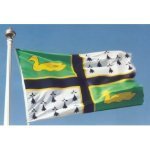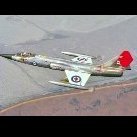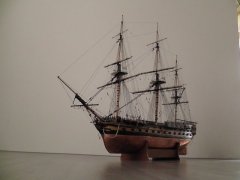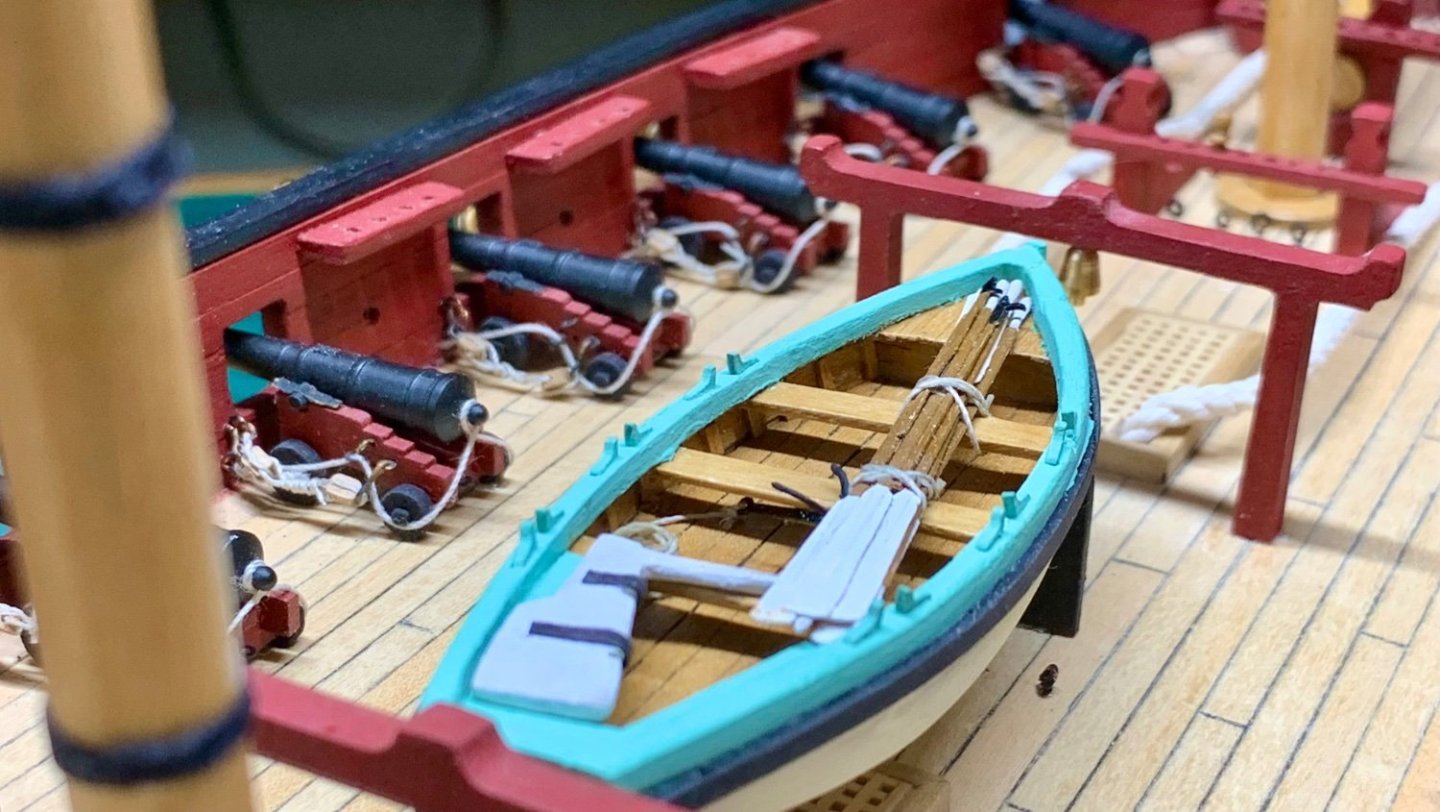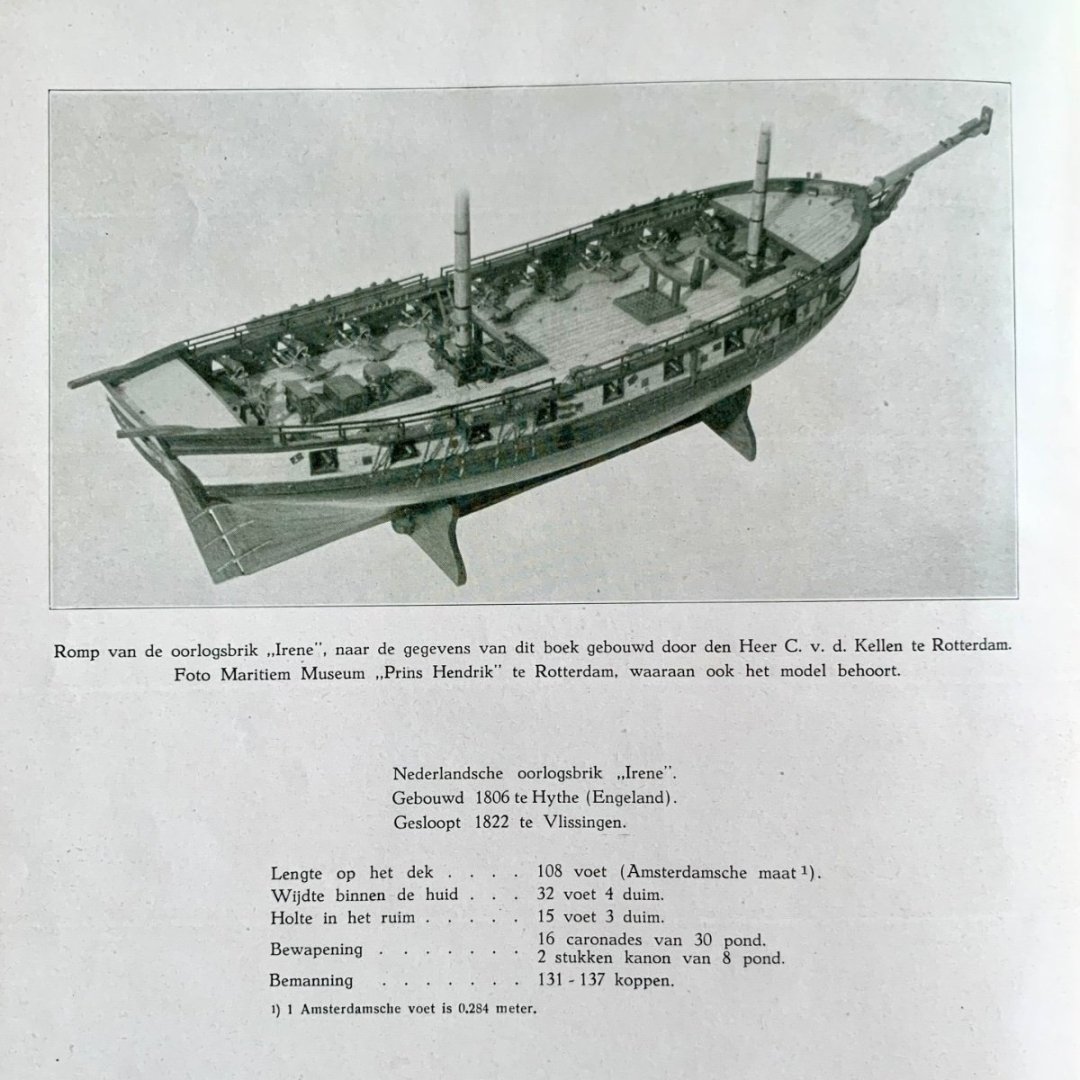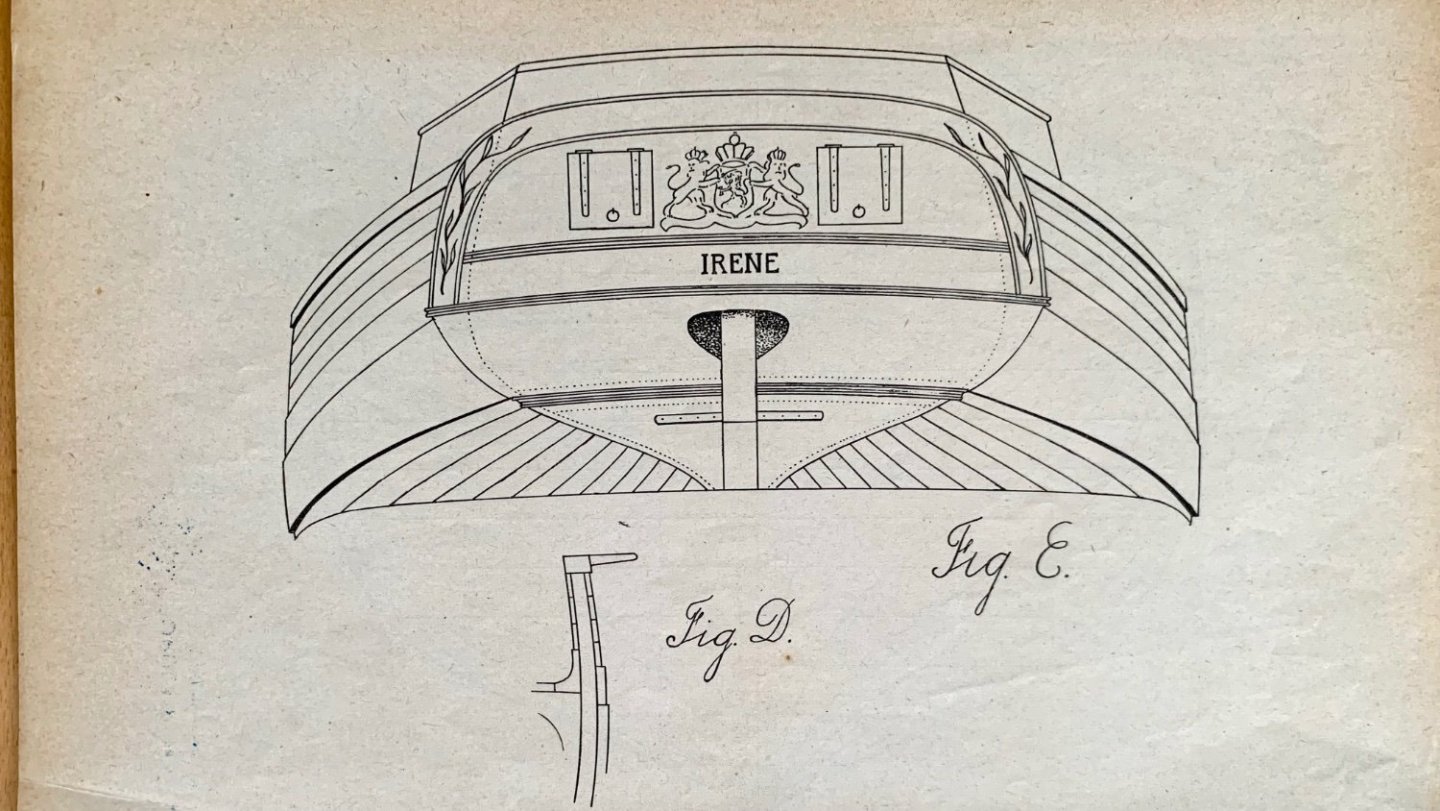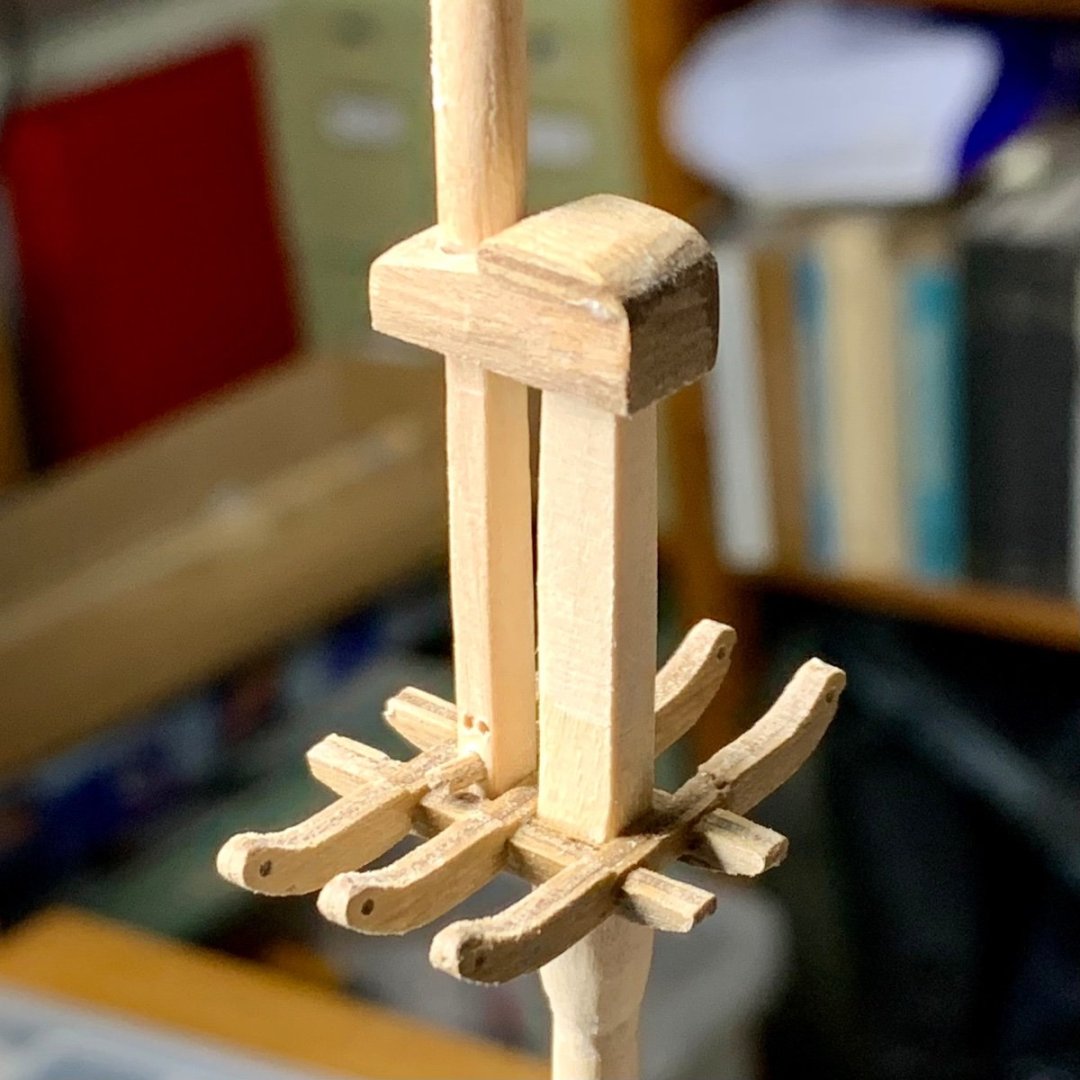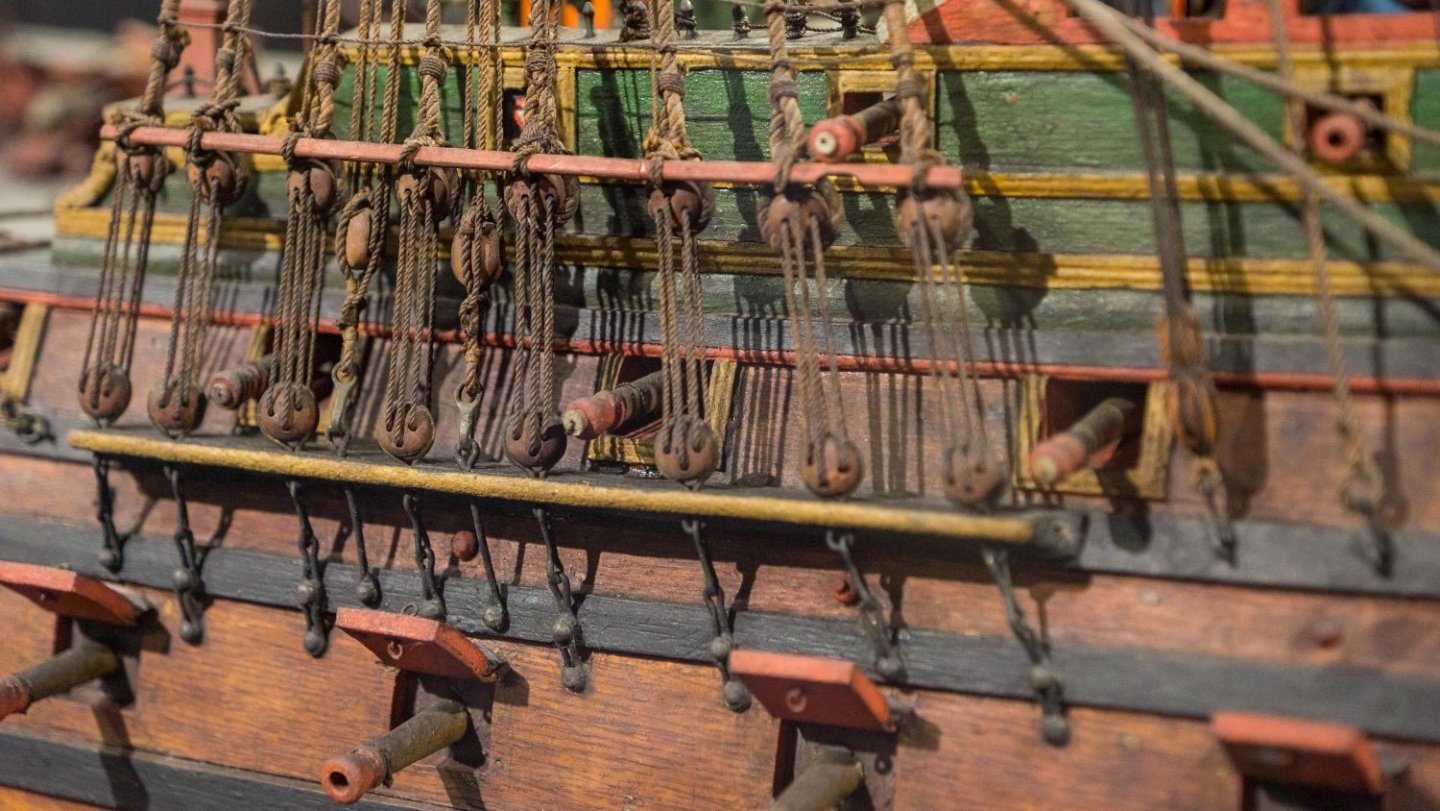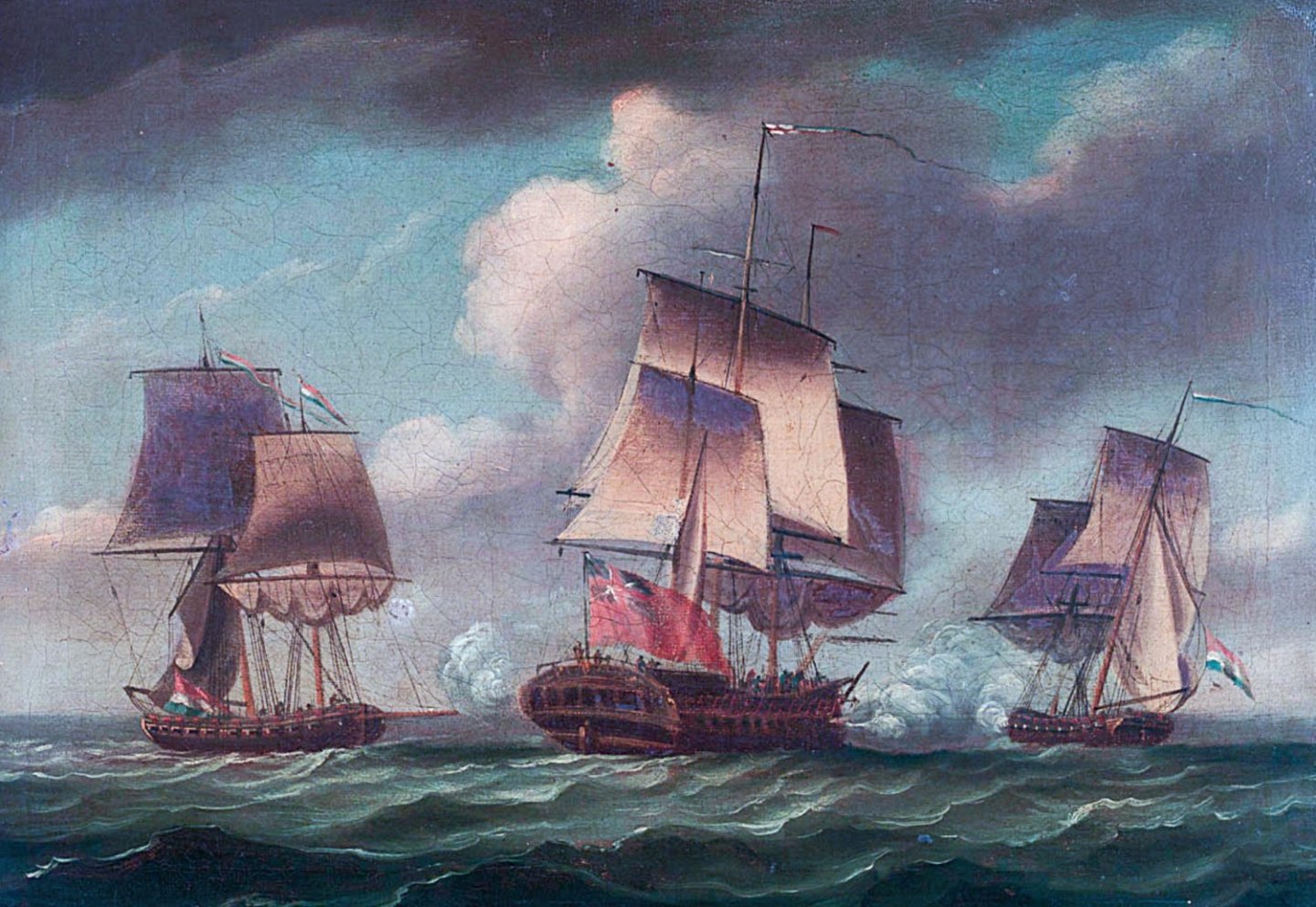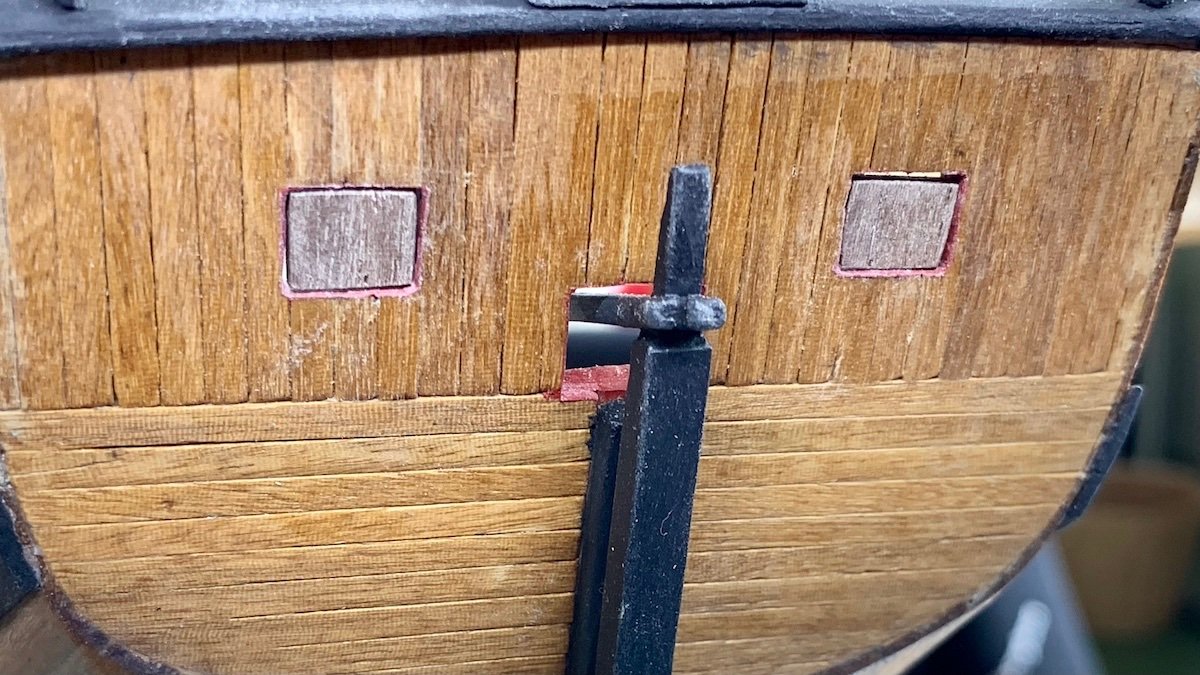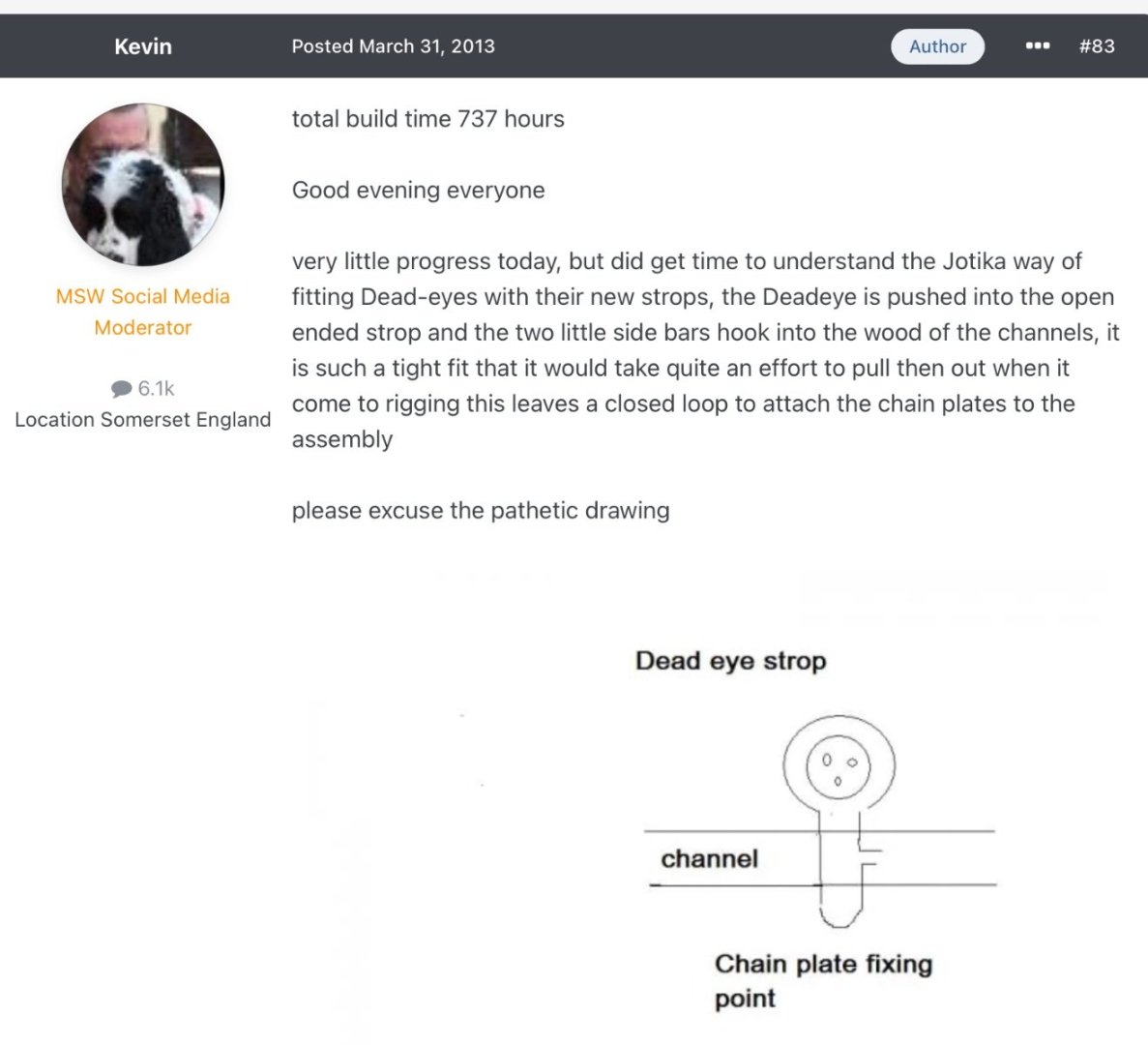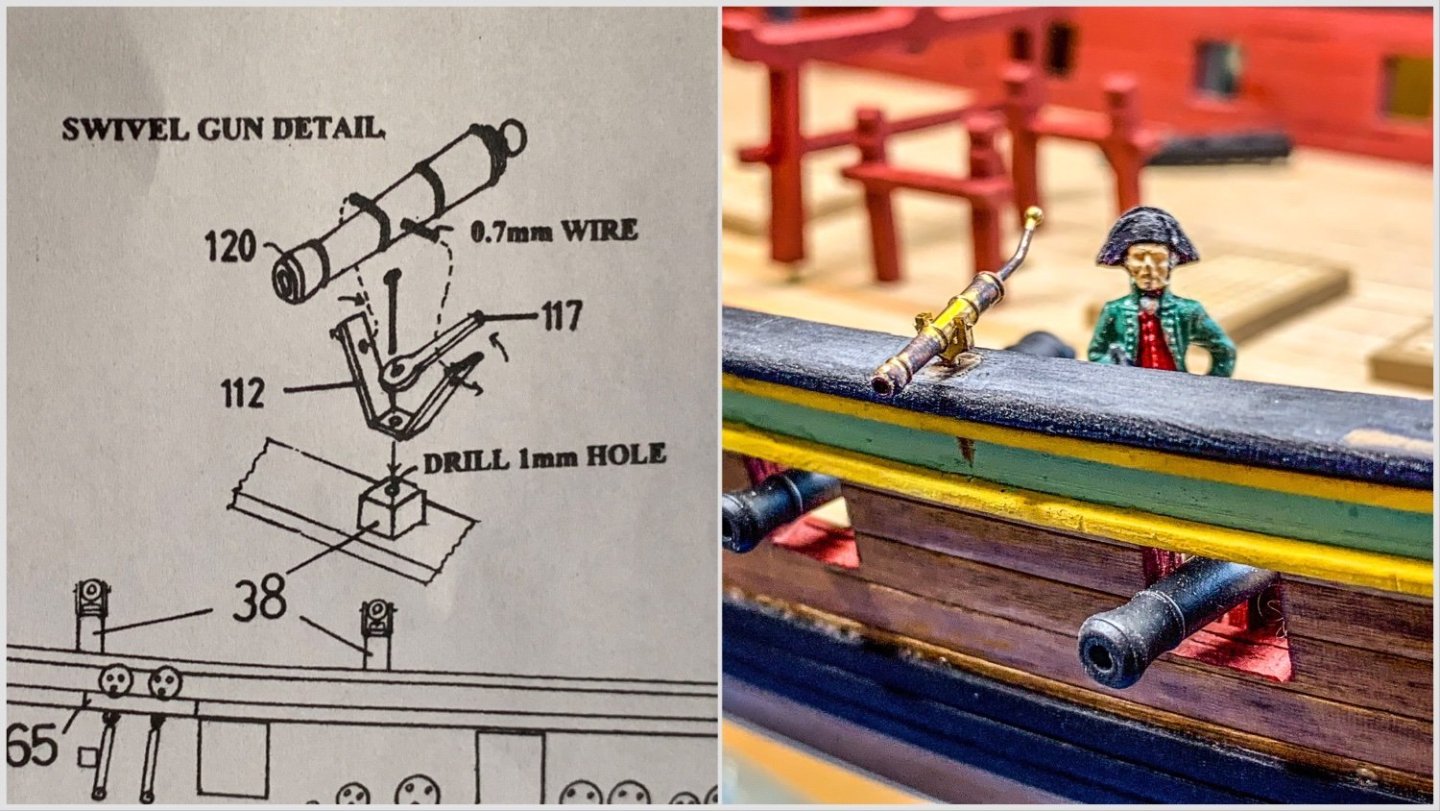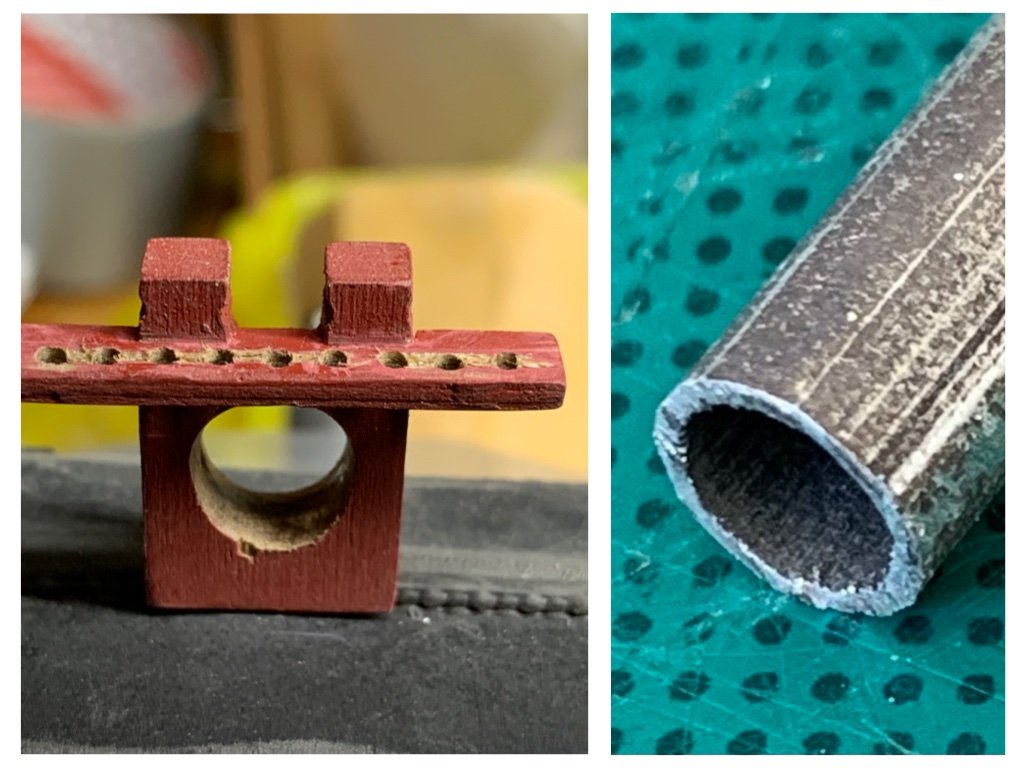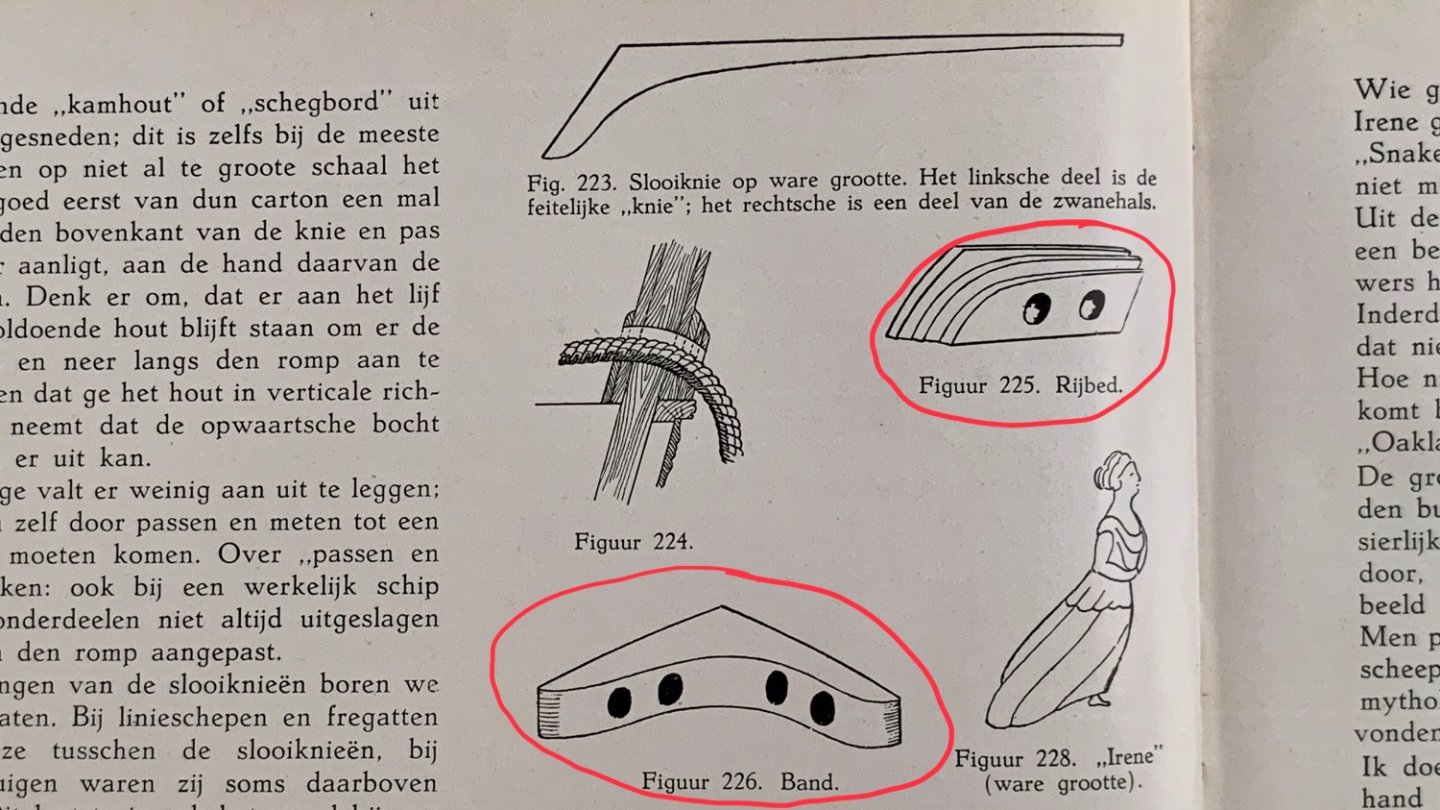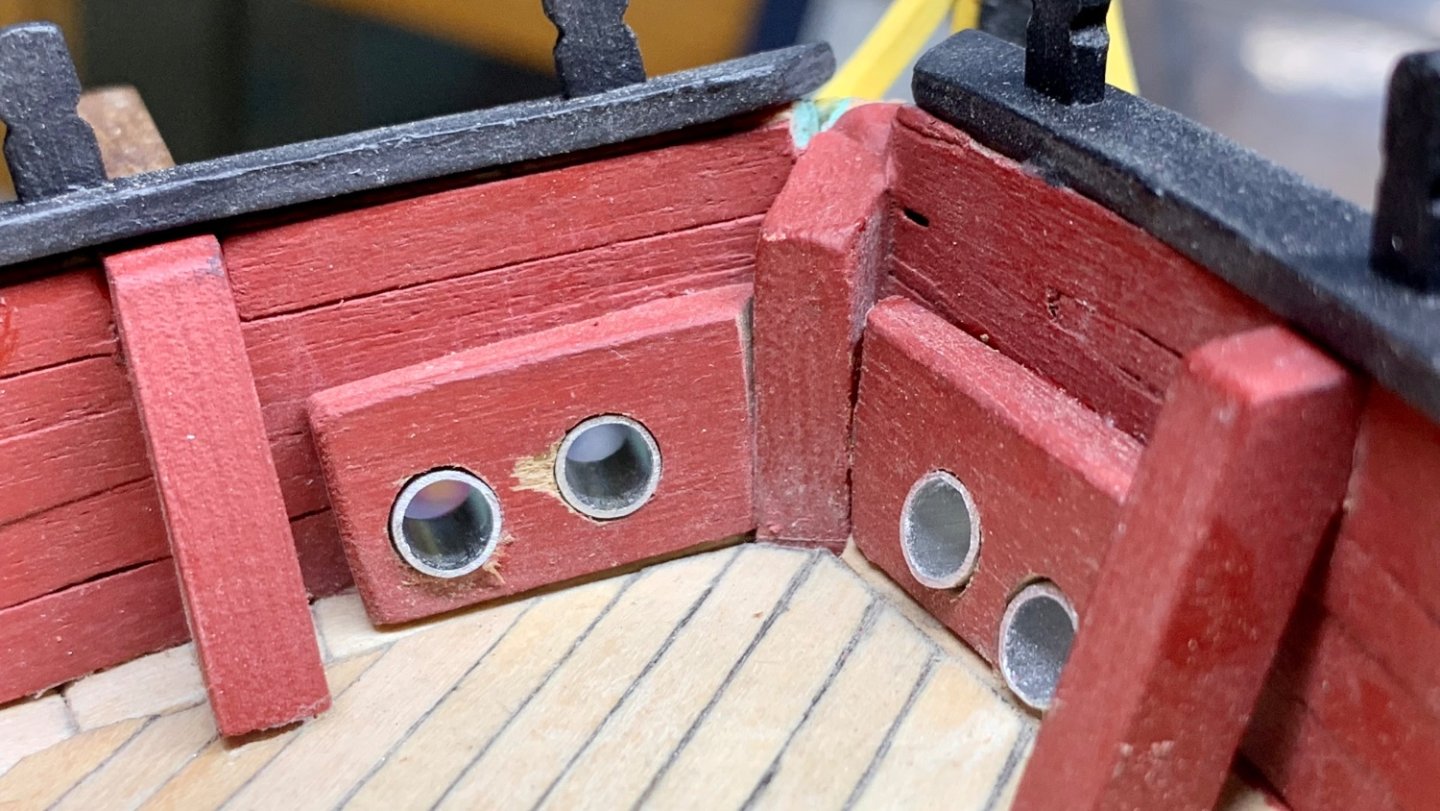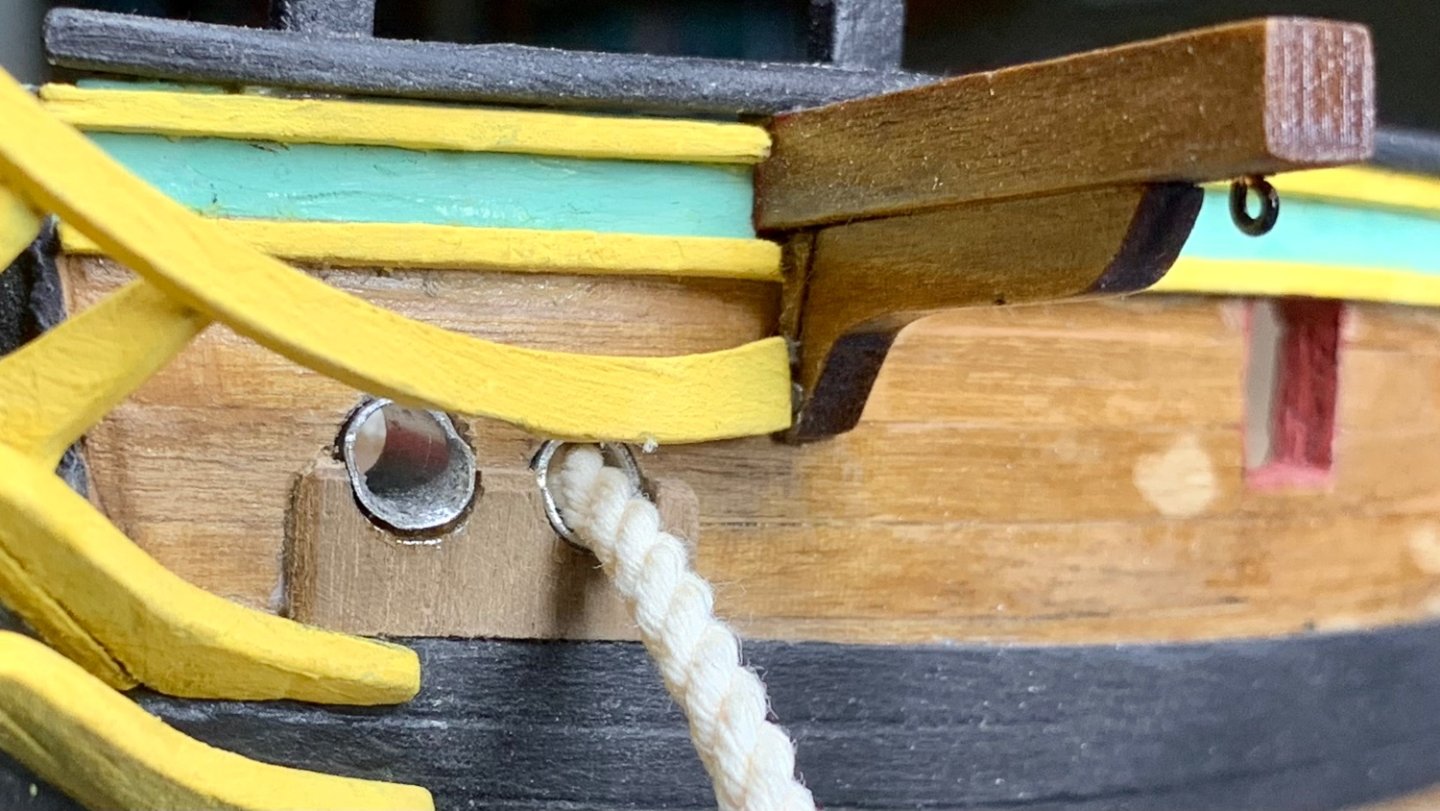-
Posts
54 -
Joined
-
Last visited
About Aa-schipper

Profile Information
-
Gender
Male
-
Location
Twente region (NL)
-
Interests
Reading Patrick O'Brian's (or other author’s) novels; finding out the history of sailing ships and the Dutch Republic in the late 18th century, besides doing photography, archery (as well as supporting the archery club’s governance) and—last but most prominently—enjoying retirement together with The Admiral, SWMBO. O, and building wooden sailing ship models, of course.
Recent Profile Visitors
-
 SUBaron reacted to a post in a topic:
HMS Mars 1781 by Aa-schipper - Caldercraft - Scale 1:64 - Dutch privateer
SUBaron reacted to a post in a topic:
HMS Mars 1781 by Aa-schipper - Caldercraft - Scale 1:64 - Dutch privateer
-
 BenD reacted to a post in a topic:
HMS Mars 1781 by Aa-schipper - Caldercraft - Scale 1:64 - Dutch privateer
BenD reacted to a post in a topic:
HMS Mars 1781 by Aa-schipper - Caldercraft - Scale 1:64 - Dutch privateer
-
 BenD reacted to a post in a topic:
HMS Mars 1781 by Aa-schipper - Caldercraft - Scale 1:64 - Dutch privateer
BenD reacted to a post in a topic:
HMS Mars 1781 by Aa-schipper - Caldercraft - Scale 1:64 - Dutch privateer
-
 Mr Whippy reacted to a post in a topic:
HMS Mars 1781 by Aa-schipper - Caldercraft - Scale 1:64 - Dutch privateer
Mr Whippy reacted to a post in a topic:
HMS Mars 1781 by Aa-schipper - Caldercraft - Scale 1:64 - Dutch privateer
-
 wvdhee reacted to a post in a topic:
HMS Mars 1781 by Aa-schipper - Caldercraft - Scale 1:64 - Dutch privateer
wvdhee reacted to a post in a topic:
HMS Mars 1781 by Aa-schipper - Caldercraft - Scale 1:64 - Dutch privateer
-
 ccoyle reacted to a post in a topic:
HMS Mars 1781 by Aa-schipper - Caldercraft - Scale 1:64 - Dutch privateer
ccoyle reacted to a post in a topic:
HMS Mars 1781 by Aa-schipper - Caldercraft - Scale 1:64 - Dutch privateer
-
 Nipper reacted to a post in a topic:
HMS Mars 1781 by Aa-schipper - Caldercraft - Scale 1:64 - Dutch privateer
Nipper reacted to a post in a topic:
HMS Mars 1781 by Aa-schipper - Caldercraft - Scale 1:64 - Dutch privateer
-
 rcweir reacted to a post in a topic:
HMS Mars 1781 by Aa-schipper - Caldercraft - Scale 1:64 - Dutch privateer
rcweir reacted to a post in a topic:
HMS Mars 1781 by Aa-schipper - Caldercraft - Scale 1:64 - Dutch privateer
-
 AJohnson reacted to a post in a topic:
HMS Mars 1781 by Aa-schipper - Caldercraft - Scale 1:64 - Dutch privateer
AJohnson reacted to a post in a topic:
HMS Mars 1781 by Aa-schipper - Caldercraft - Scale 1:64 - Dutch privateer
-
The deck is taking shape: the guns have their breeching and outhaul tackles. The outhaul tackle is an extra. Having seen the display of guns on HMS Victory, HMS Warrior and HMS Unicorn, it appeared that they must be shown, and it makes sense, because without outhaul tackle, you cannot stow the guns next to gunports and they take no precious space on deck, the ends being wound up between the blocks on either end. Hence I bought the smallest blocks I could find online (2 mm), measured out some 7 meter of .25 mm rope, and put in a bit of time. I had previously provided the gunports with four eyelets: two for the breeching rope and two for the outhaul tackle. In the picture, also the additional cutter is shown. According to Petrejus (and as one may read in any Aubrey/Maturin novel), ships had a number of cutters, gigs and the like, so two (the other one will hang in the davits a the stern, eventually) seemed to me the minimum for this privateer. To be honest, I'm fairly satisfied with the look of the deck like this.
-
 CiscoH reacted to a post in a topic:
HMS Mars 1781 by Aa-schipper - Caldercraft - Scale 1:64 - Dutch privateer
CiscoH reacted to a post in a topic:
HMS Mars 1781 by Aa-schipper - Caldercraft - Scale 1:64 - Dutch privateer
-
Well, Hardly necessary to respond to you anymore, @Nipper, as the main answers are already there: Irene started life as a Cruizer-class RN brig, but Commander Fanshawe struck to the Dutch fleet after foundering on the Dutch coast due to a heavy storm in December 1811. Let me add pictures of the frontispiece of Petrejus' book, which gives the sizes (in amsterdam feet = 0.284 m = 0.932 ft) and a detail of one of the plans in the book that shows the design of the stern.
-
I wonder if anyone still follows my build log—I’m soooo slow. After enjoying summer, vacation, sports and other hobbies, which took me well into the new year, I finally have a little progress to report on Mars. The masts were filed and sanded into more or less correct shape—not down to the historically correct sizes at the level of a tenth of a millimetre, I admit, but no-one of my expected audience (very few family members, all bigger landlubbers than me) will notice and I find it downright scary to make the wood so thin and fragile. With my clumsy, erratic moves the risk of breaking something during the build is big enough as it is. But what makes it worthwhile to post about the masts, is that I found in the priceless Petrejus (confirmed by other online sources) that Dutch mastcaps followed the French design, with a closed ‘head’ on the cap rather than the simple oblong block with two holes in English style that are part of the kit. Starting from the provided English-style pieces, I simulated the Dutch/French style mastcaps with a couple of scrap pieces of 2 mm walnut. (Photo from before painting them black, for clarity). Also in Dutch rather than English style, and also found in Petrejus’ book on Brig Irene, I made two holes just above the fid for raising and lowering the topmasts by cables that were hung through the mastcaps when topmasts had to be taken down, e.g., in stormy conditions. In English style, that part of the topmast would have been octagonal with holes for cables in diagonal lay out, which Petrejus claims was more efficient as it avoided the cables getting entangled—but apparently Dutch shipwrights did not do such newfangled things.
-
 Aa-schipper reacted to a post in a topic:
Chris Watton and Vanguard Models news and updates Volume 2
Aa-schipper reacted to a post in a topic:
Chris Watton and Vanguard Models news and updates Volume 2
-
 Aa-schipper reacted to a post in a topic:
Position of gun barrels in relation to gun ports for show purposes ( run out )
Aa-schipper reacted to a post in a topic:
Position of gun barrels in relation to gun ports for show purposes ( run out )
-
Maybe a matter of 'fashion' that might change over time? I found a couple of paintings from the 1780s-1800s where ship guns were given a white circle around the mouth. The ships depicted were Dutch, though the painters were both Dutch and English. And in the Rotterdam Maritime Museum there is a contemporary model of a 1720s ship with red 'socks' covering the mouth and part of the barrel. Sorry, we're going a bit off-topic. To return to centring guns: both photos attached show guns neatly centred in the gunports both horizontally and vertically. (Info on pictures: my photo with detail of a painting is from Engel Hoogerheyden's painting 'Dutch blockading fleet...in the roads of Flushing' (1784) at the National Maritime Museum Amsterdam; my photo of a detail of VOC ship Padmos/Blydorp (1722-23) at the Maritime Museum Rotterdam; reproduction of R. Dodd 'Artois capturing two Dutch privateers, 3 December 1781' from the NMM Greenwich collection.)
-
Extreme lines, not your ‘thirteen in a dozen’ ship. What a sleek hull, and that extremely long bowsprit 😍! Very beautiful and certainly on my wish list, too! Thanks, James, for this sneak preview into the building manual 😉
- 80 replies
-
- Grecian
- Vanguard Models
-
(and 3 more)
Tagged with:
-
 Aa-schipper reacted to a post in a topic:
brass black
Aa-schipper reacted to a post in a topic:
brass black
-
Stern chaser gunports closed While I'm collecting courage to attack the deadeyes 😉, I have followed another of Petrejus's suggestions: the stern chaser gunport were closed unless in use, he contends, so I made two little hatches from some centimeters of leftover walnut, glued onto some leftover boxwood (never throw away scraps of wood of any size!). I'd love to make them working, with real hinges. Had I thought of this in time, then I could have ordered some hinges when last I bought things from a modelling webshop (there is no specialised shop in my neighbourhood).
-
 Aa-schipper reacted to a post in a topic:
HMS Mars 1781 by Aa-schipper - Caldercraft - Scale 1:64 - Dutch privateer
Aa-schipper reacted to a post in a topic:
HMS Mars 1781 by Aa-schipper - Caldercraft - Scale 1:64 - Dutch privateer
-
Sjors, I'll be curious to see how your Duyfken comes on. I've been aware of Kolderstok since a number of years, but want to finish my Mars before deciding if I go from 1:64 to 1:50. Could you please comment on the quality of the materials, e.g. how snug is the fit of bulkheads on the keel? Are there any helpful structures for making a rabbet (as Vanguard models now have), etc.? Judging from your pictures, it's looking good!
-
 Aa-schipper reacted to a post in a topic:
Duyfken by Sjors - Kolderstok - scale 1:50 - VOC reconnaissance yacht
Aa-schipper reacted to a post in a topic:
Duyfken by Sjors - Kolderstok - scale 1:50 - VOC reconnaissance yacht
-
 Aa-schipper reacted to a post in a topic:
Chris Watton and Vanguard Models news and updates Volume 2
Aa-schipper reacted to a post in a topic:
Chris Watton and Vanguard Models news and updates Volume 2
-
Deadeyes I’ve been wondering for a couple of weeks now how to make the deadeyes: what is Caldercraft’s intention with the two little protrusions on the bent metal rings that go around the deadeyes and then down through the channels? A search of this forum on the terms ‘deadeyes’ and ‘Caldercraft’ did not turn up exactly what I wanted, so I started to browse build logs of Caldercraft/Jotika models and just now I found @Kevin solved my riddle ten years ago when he built HMS Victory. So the point of the points is to squeeze them into the little slots in the chainplates and then let friction do its work. And a little CA glue to make sure, perhaps? I wonder how much force the shrouds will come to exert on the deadeyes and don’t want to get nasty surprises when doing the rigging. A thought on glues As regards CA glue, I’ve been (and remain) a believer in PVA for anything wood, as I found the superglue stuff way too messy and too fluid. To stick metal and wood together, I have used a glue I had for my archery sport, Bohning Flex-tite Platinum (https://shop.bohning.com/adhesives-arrow-prep/fletch-tite-platinum-glue/), a slow-setting glue (not too slow though, setting time 5 minutes) to stick vanes to arrows. Recently I bought Zap Yellow CA glue, the gel type, and that works even better, as it can be used in very small dabs precisely in the place where you want it while it sets much faster than the vane glue yet leaves you some time to adjust pieces. A thought on languages By the way, I much prefer the Dutch word for deadeyes: jufferblokken, which literally means lady’s blocks. Much friendlier idea to have rows of ladies smiling at you than to be staring at dead eyes 😉
-
Swivel guns Imagining how life onboard might have been, back in 1781, is one of the things that gets me into a good mood—and it makes me glad I don’t have to undergo those hardships! A few little figurines help the imagination, and they also help to get a better understanding of the size of things. Which led me to some little tweaks of the kit at the swivel guns. First, putting the Amati figurine (I imagine it represents Head Surgeon Guiljelmus de Messemaker) on the quarterdeck, shows that the bulwark is as high as a man. The construction of the Caldercraft swivel guns, on a sort of pedestal and a swivel construction that gives even more height (see left-hand picture), strikes me as way too high to be practicable. Second, I found the guns in the box too bulky to represent light swivel guns. For those two reasons, I ordered a set of smaller-looking swivel guns (made by Amati again, as I noticed upon receipt) and I’ll put them directly onto the caprail, as I have seen it done on the full-size replica of VOC ship Amsterdam, lying behind the Maritime Museum in Amsterdam. Moreover, the bulwark of that ship is no more than hip high, if I remember well. (I’ve got a photo of it somewhere and can insert it into this blog if you, my readers, would like that.) Guiljelmus de Messemaker Why do I call the figurine Guiljelmus de Messemaker? Well, any reader of the Aubrey-Maturin novels knows that a ship isn’t a story without a surgeon, and on the Mars, the ‘head doctor’ was called Guiljelmus de Messemaker. So I wanted a figure in civilian clothes onboard—she was a privateer, after all—for which from contemporary paintings a green coat and brown breeches (and a red waistcoat—why not?) seemed appropriate, and I thought it might well represent the doctor. Perhaps surprisingly for such a small brig, there was also a ‘second doctor’ onboard, Samuel Zwetz. Their names are known, because they acted as witnesses in the published ‘Account’ of Mars’s ill-fated voyage of December 1781.
-
Thanks for the suggestions, @AJohnson and @BenD! Most of them I had been applying already, except the CA glue trick to harden the surface. So it’ll have to be the wood filler, drill again (with my pin vice drill—I don’t even own an electric one for model building), and repaint. Oh well, plenty other things to be done in the meantime, like the other deck fittings and anchors, to get into a good mood again.
-
A bit of frustration at the end of the week. Expected but a bit of a disappointment is, first, that indeed the blackening solution based on sulphuric acid is not very successful for the metal casings in the hawse holes: it blackens the tube alright, but that's hardly visible on the cutting edge (right-hand photo). Paint was the alternative I had already thought of. Second, all belaying racks have beautiful holes straight out of the box, but all those holes are less than 1.0 mm diameter while the belaying pins in the box have a 1.6 mm diameter. That means I must drill out all those holes, which I don't mind doing, but I do not manage to do it without damaging each and every rack (left-hand photo), however careful I try to be with my hand-held mini drill. What to do?
-
Another bit of inspiration from Petrejus’s book on the brig Irene made me try to improve the hawse holes. Until now, I just had drilled very small holes as ‘place holders’. Digging up the anchor cable of the kit (my first opening of the bag with rigging threads—a sign of progress 😉), it proved to need a 4 mm diameter hawse hole. Petrejus gave me three points of improvement. First, to protect the ship’s hull from chafing by the heavy cable, the planking would need protection, both outside (fig. 225 in the copy from Petrejus’s book, below) and inside the bulwark. Second, the inside strengthening also served as a band to keep starboard and port sides of the bulwark together (figure 226). Third, the inside of the hawse holes was clad with metal, again for protection but also to reduce friction. For point 1, it was easy to take a scrap bit of material from the 1.5 mm sheet of walnut wood containing the cut-out parts and glue it to the hull, resting on the main wale. For point 2, initially I shaped a block of wood in about the form of fig. 226, but to fit around the protruding bit of the keel above the deck and with the needed height of about 8 mm, it became such a massive thing that I abandoned it. Slightly simpler, I made 4 mm thick plates (again from scrap bits of the kit material), which together with that bit of the keel above deck might simulate Petrejus’s band. Finally, point 3 led me to buy a piece of aluminium pipe at the local model building shop. With an inner diameter of 4 mm, the outer diameter became 5 mm. Quite a big hole needed to be drilled in the hull! Isn’t it oversized? But given the size of the anchor cable, there was no other option, so here goes… Drilling and filing to get smoothly-fitting holes for the aluminium pipe was nervous stuff, and of course I did not get the hawse holes located as symmetrical and exactly-fitting as I had wanted. ‘Museum quality’ is hard to reach! But I did it and it works. Yes, the red paint needs repairing, as does the ochre paint of the bow rails, but at least those are still whole and in place. I’ll also experiment on a bit of left-over aluminium pipe (lots of it left over!) to find out how best to get a more greyish sheen on it, to resemble iron or lead. Probably I’ll end up painting them.
-
Thanks, Allan, for your historical reference. Knowing the conservativeness of Dutch shipwrights in the 18th century, I might assume they had not necessarily abolished shot garlands when this ship was outfitted as a privateer, in 1781. Moreover, the senior captain of the little squadron (there were two privateers, operating in tandem) was an old, very experienced man, which is another reason to expect an old-fashioned deck lay out (more like mid-century, when he was young). So I might go for shot garlands, but then placed on the bulwarks (Chris Watton suggested that to me), while keeping the binding strakes free for the rings. Thanks, too, for teaching me the correct translation of ‘schaarstokken’ as ‘binding strakes’—neither my old school dictionary nor Google Translate had that, and even in Patrick O’Brian’s Aubrey/Maturin novels I had not come across the term 😊
About us
Modelshipworld - Advancing Ship Modeling through Research
SSL Secured
Your security is important for us so this Website is SSL-Secured
NRG Mailing Address
Nautical Research Guild
237 South Lincoln Street
Westmont IL, 60559-1917
Model Ship World ® and the MSW logo are Registered Trademarks, and belong to the Nautical Research Guild (United States Patent and Trademark Office: No. 6,929,264 & No. 6,929,274, registered Dec. 20, 2022)
Helpful Links
About the NRG
If you enjoy building ship models that are historically accurate as well as beautiful, then The Nautical Research Guild (NRG) is just right for you.
The Guild is a non-profit educational organization whose mission is to “Advance Ship Modeling Through Research”. We provide support to our members in their efforts to raise the quality of their model ships.
The Nautical Research Guild has published our world-renowned quarterly magazine, The Nautical Research Journal, since 1955. The pages of the Journal are full of articles by accomplished ship modelers who show you how they create those exquisite details on their models, and by maritime historians who show you the correct details to build. The Journal is available in both print and digital editions. Go to the NRG web site (www.thenrg.org) to download a complimentary digital copy of the Journal. The NRG also publishes plan sets, books and compilations of back issues of the Journal and the former Ships in Scale and Model Ship Builder magazines.



